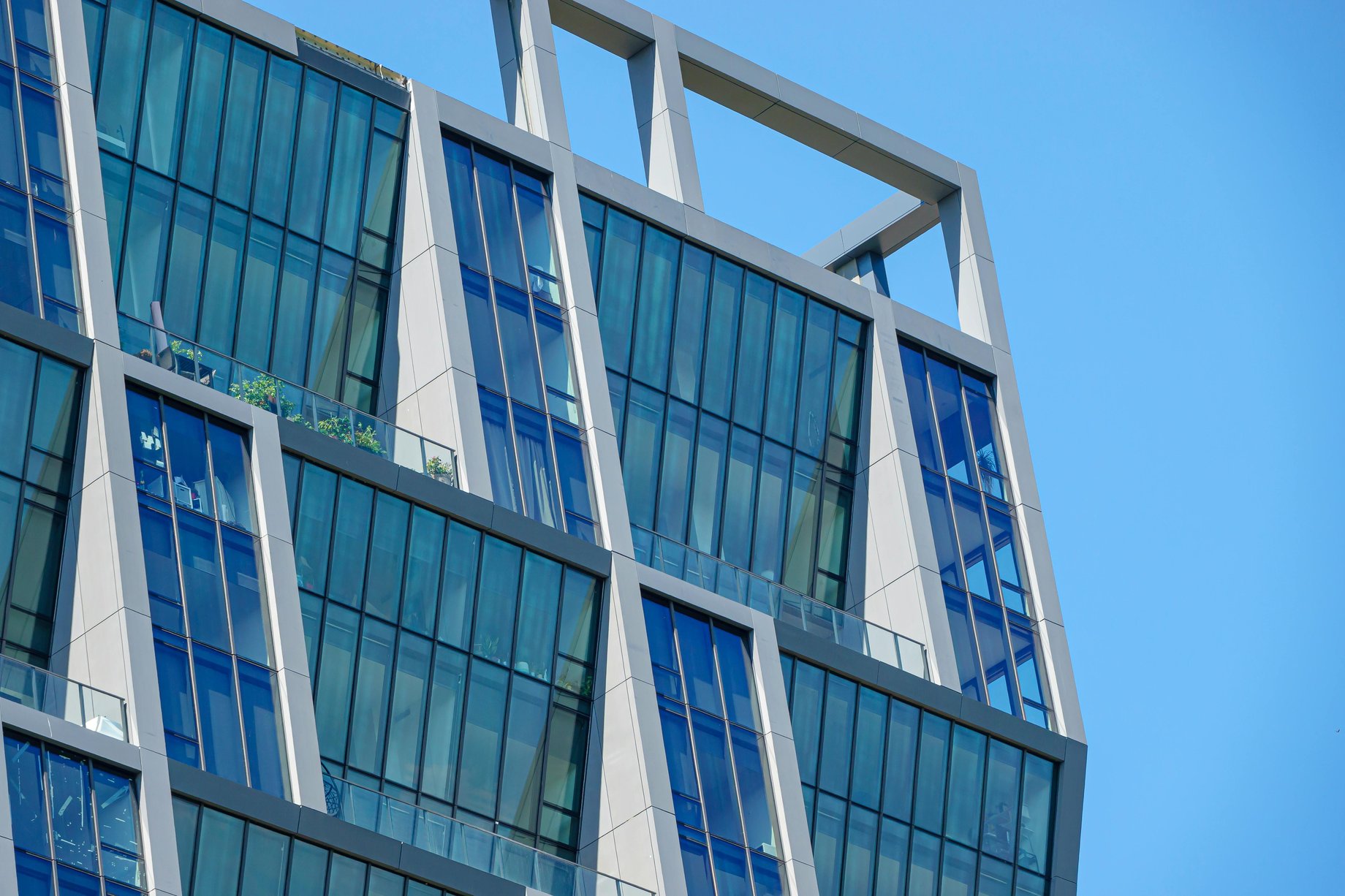The construction industry is facing unprecedented pressures: tightening regulations, customer demand for greener products, and the urgent need to reduce embodied carbon. Across the value chain — from designers to manufacturers — sustainability is no longer optional. It is integral.
Artificial Intelligence (AI) is now emerging as a transformative tool for sustainable construction, offering powerful new ways to drive efficiency, quality, and low-carbon outcomes. Yet for many professionals, understanding how to leverage AI — without getting lost in the hype — remains a challenge.

A new era for sustainable construction
Relevant for sustainability consultants, construction product manufacturers, architects, and specifiers, understanding how to use AI effectively — and responsibly — is a critical step to understanding how it will impact the sustainable construction landscape in the future.
“Sustainable design and AI are natural partners. Both are highly data-driven, and both benefit massively from having access to rich, accurate datasets." - Alex Kerswill - VP Customer Success, One Click LCA
Defining sustainable design and AI
What is sustainable design?
Sustainable design is not simply about creating eco-friendly buildings. It is about purposefully minimising environmental harm while maximising human well-being throughout a project’s entire life cycle — from conception to demolition.
The UK Green Building Council defines sustainable design as:
"The purposeful design of buildings, places, and products that minimises harmful environmental impacts, drastically reduces carbon emissions, and positively increases health, well-being, biodiversity, and social value throughout their life cycles."
Sustainability is holistic. It involves careful material choices, energy modelling, circular economy principles, and early decision-making — all backed by robust data.
Unlocking AI in sustainable design
Hear how AI is being applied across the construction design landscape to accelerate decarbonisation.
What is AI in the context of sustainable construction?
AI — Artificial Intelligence — is often misunderstood. In the construction sector, AI is not about replacing designers. Rather, it is about:
- Automating tedious processes such as entry of large volumes of data
- Enhancing decision-making through better data
- Predicting outcomes based on thousands of prior decisions
- Accelerating tasks while improving quality
"There has been a lot of hype and noise around AI. As practitioners, we must stay focused on where AI genuinely creates value: improving efficiency, improving quality — or both."
AI in sustainable design means empowering professionals to make better, faster, and lower-carbon choices.
How AI is helping to solve critical pain points in sustainable design
Despite progress, delivering sustainable construction is still faced with challenges. AI is already alleviating some of the pressure, but there are some common pain points across the embodied carbon reduction journey.
Pain point 1: Lack of high-quality environmental data
Without data, there can be no science-based design decisions. Yet data gaps, inconsistencies, and missing product LCA data are stalling progress in many projects.
"The number one pain point we hear is that people want more and better data.”
AI Solution:
Databases like One Click LCA’s Materials Compass, enhanced by AI, provide access to over 300,000 verified carbon factor datapoints — making it easier to find reliable materials fast.
Pain point 2: The high cost and complexity of creating EPDs
Creating an EPD can cost thousands of euros and months of work. This bottleneck limits the availability of essential data for designers.
AI Solution:
AI-driven EPD Generators and verification processes help automate repetitive tasks, flag common mistakes, and cut time-to-market, enabling manufacturers to release more EPDs affordably — without sacrificing quality.
"We need to create and verify EPDs faster and cheaper, but without any loss of reliability."
Pain point 3: Manual data mapping and inefficient LCAs
Mapping project-specific materials to carbon databases remains frustratingly manual and error-prone.
AI Solution:
AI-powered import tools automatically map materials from Revit models or spreadsheets to LCA software databases, slashing hours of tedious work.
"AI-enhanced mapping is drastically reducing user effort and improving accuracy."
Pain point 4: Limited ability to optimise early-stage designs
The biggest carbon savings happen at the concept stage. But early designs often lack sufficient data for detailed LCAs.
AI Solution:
Generative AI tools can create hundreds of design alternatives based on minimal inputs — each with predicted whole-life carbon estimates — empowering informed decision-making earlier than ever before.
"You can now create hundreds of options and compare them by whole-life carbon in minutes."
Pain point 5: Sustainability remains a bolt-on, not integrated
Even today, sustainable design often feels separate from the core design process.
Future AI Vision:
Embedding sustainability criteria natively into every design decision — powered by seamless AI integrations across BIM, Revit, design tools, and carbon calculators.
"Ultimately, there won’t be sustainable design as a separate thing, it will just be design — with sustainability fully embedded."
One Click LCA for buildings and infrastructure: LCA software to reduce embodied carbon in your projects
Functional benefits of AI for construction professionals
Understanding the theory behind AI is important — but the real value lies in how it transforms everyday work. For construction professionals across the value chain, embracing AI in sustainable design is no longer a futuristic concept — it’s a tangible opportunity to work smarter, faster, and with greater impact.
AI is not here to replace the critical thinking, creativity, or sustainability leadership that professionals bring to their projects. Instead, it acts as a force multiplier — automating the tedious, repetitive tasks that slow you down, enhancing the quality of your outputs, and enabling the delivery of more sustainable results with fewer resources.
Whether designing buildings, specifying materials, modelling carbon impacts, manufacturing products, or consulting on sustainability strategies, AI tools are already streamlining processes, minimising human error, and providing faster access to actionable data.
By integrating AI into workflows today, sustainability professionals are positioned not just to meet evolving client demands and regulatory requirements, but to lead in an industry that increasingly values low-carbon, data-driven decision-making. The professionals who skillfully harness these tools will not only create better designs — they will define the future of sustainable construction.
The benefits of AI-driven tools:
1. Greater efficiency
- Automated import mapping saves hours of manual work.
- AI-generated early-stage options compress weeks into minutes.
- Smart plausibility checkers quickly flag outliers before costly mistakes.
2. Higher quality outcomes
- Benchmarking tools ensure your designs are credible and plausible.
- AI-enhanced EPD verification reduces human error, increasing trust.
- Natural language search helps you find optimal materials faster.
3. Competitive differentiation
Companies who master AI early will win more work, serve clients faster, and deliver lower-carbon outcomes — giving them an advantage in an increasingly sustainability-driven market.
"AI won't take your job, but someone using AI effectively might."
A glimpse into the future of AI in sustainable construction
As the construction industry rapidly evolves, driven by the twin imperatives of decarbonisation and digitalisation, AI is poised to become a cornerstone technology — not just an optional enhancement. The integration of AI into sustainable design practices is still in its early stages, but the trajectory is clear: more automation, smarter decision-making, deeper integration, and greater impact at every phase of the project life-cycle.
For construction professionals who want to stay ahead, it’s critical to understand the direction this technology is moving — and how it will reshape sustainable construction as we know it. Here’s what you can expect as AI continues to accelerate across the sector.
Hyper-acceleration of AI capabilities
As Jensen Huang, CEO of NVIDIA, states, we are entering the age of Hyper-Moore's Law — AI model sophistication will double even faster than traditional technology cycles.
Expect AI design assistants, instant plausibility checks, real-time carbon optimisation, and intelligent sustainability advice becoming standard.
Full integration of sustainability into every workflow
Rather than adding carbon analysis after design decisions, future workflows will embed carbon intelligence at every stage:
- Early concept stage
- Material selection
- Structural engineering
- Mechanical and HVAC design
- Site management and logistics
In short, sustainability will be as standard as cost and schedule control.
Rise of end-to-end AI-powered design
From early urban microclimate simulations — like One Click LCA’s ENVI-met — to full life-cycle analysis, AI will handle increasingly complex workflows — but always under human oversight.
"In the future, AI will support — or even own — hundreds of the micro-decisions that currently require human judgment throughout a project’s life cycle."
One Click LCA EPD Generator: Create product LCAs and EPDs 10x faster
Navigating the risks of AI
The potential of AI in sustainable design is vast — offering unprecedented improvements in efficiency, quality, scalability, and innovation. However, with such transformative power comes a new set of responsibilities. As AI tools become more deeply embedded into construction workflows, it is essential that professionals not only harness their advantages but also proactively recognise and mitigate the associated risks.
Without careful management, AI systems can introduce unintended consequences, from biased outputs and data integrity issues to reduced transparency and overreliance on automated processes. Ensuring that AI remains a tool for enhancement — rather than a source of error, ethical compromise, or professional deskilling — requires vigilance, critical evaluation, and a deep understanding of how these systems are built and operated.
For construction leaders, sustainability consultants, and design practitioners alike, embracing AI means mastering both its opportunities and its limitations. Responsible use of AI will be a defining skill set for the next generation of sustainability champions.
- Model explainability: Understand how AI arrives at outputs — avoid black-box trust.
- Bias and training data issues: Scrutinise what data is used to train your tools.
- Intellectual property questions: Know who owns AI-generated content.
- Professional deskilling: Stay AI-literate to remain indispensable in your role.
How One Click LCA can support you with your AI in sustainable design goals
Delivering low-carbon, high-performance projects demands both cutting-edge technology and practical, real-world expertise. One Click LCA’s AI-powered tools are designed to help you overcome the key barriers to sustainable design — from streamlining early-stage design optioneering and automating LCA data mapping, to accelerating EPD creation and verification with unparalleled accuracy. Whether you are an architect, engineer, manufacturer, or consultant, our solutions integrate into your workflows, empowering you to make smarter, faster, and greener decisions at every stage. Backed by the world’s largest database of environmental data, and supported by our team of sustainability and carbon experts, One Click LCA enables you to turn ambitious sustainability goals into measurable, achievable results.
Carbon Experts Newsletter
Industry news & insights — straight to your inbox
Want to learn more?
Laura Drury • Apr 23 2025
Justyna Michalik-Minken • Apr 14 2025
Melina Zacharia • Apr 11 2025
